Over time plying yarns and the resulting color distribution come into question, which often leads to discussions on plaiting.
The plaited knit can be reversible, traditionally the main color will dominate the knit side, the contrast the purl.
The two yarns are threaded in separate yarn masts, with the thicker yarn on the right.
Plaiting is sometimes used in bringing scratchy yarns such as lurex can be plaited with softer yarns so that the latter is worn closer to the body in the final garment.
One of my ancient swatches shows some variations in using 2 different colored fibers in three ways. It was tagged for display with myriad other assorted swatches on corkboards in my classroom, which were usually covered with a variety of illustrations of stitches and techniques covered in weekly classes and in response to recent trends. As always, effects vary dramatically depending on the choice of yarn color, fiber content, and thickness. Here the 2 yarns were fed through separate tension masts, and knit together 
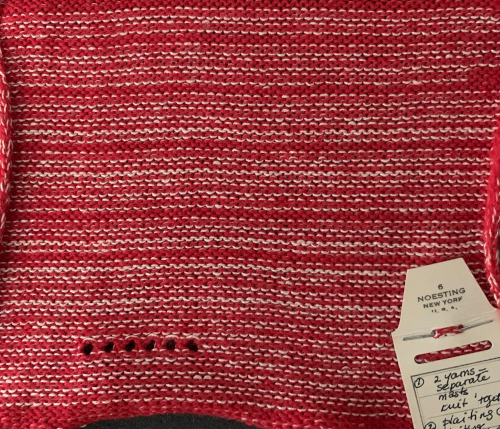 plaiting with yarns swapped in feeders for reversible striped effect
plaiting with yarns swapped in feeders for reversible striped effect 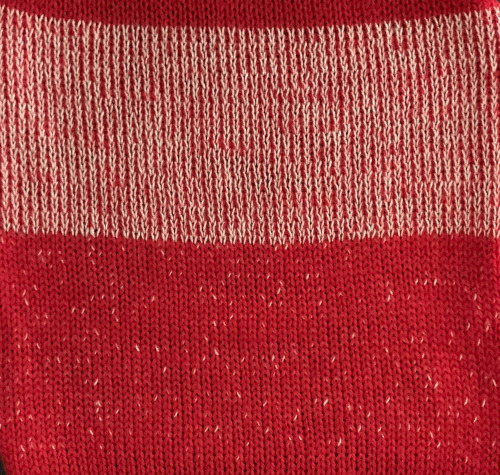
 yarns wound together with yarn twister and used as a “single strand”
yarns wound together with yarn twister and used as a “single strand” 
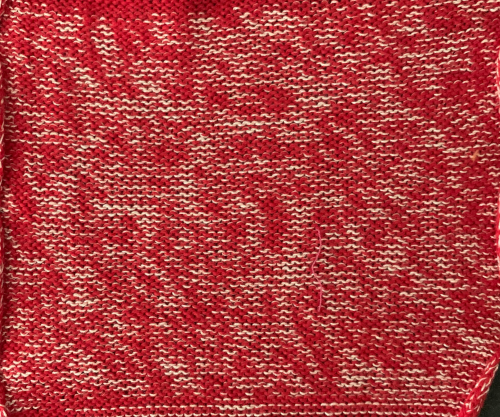 Striping created by reversing yarn positions in plaiting feeder
Striping created by reversing yarn positions in plaiting feeder 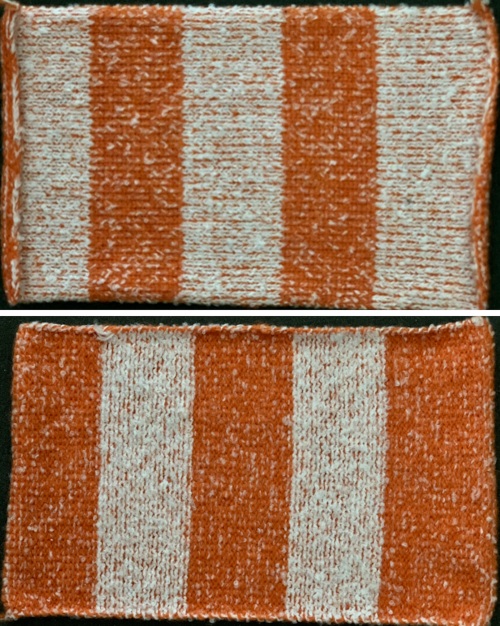 Using the thread lace setting and plaiting feeder working in every needle rib
Using the thread lace setting and plaiting feeder working in every needle rib  A mock plaiting effect may also be obtained without a special feeder by locking the pattern on any all blank row, the standard yarn feeder with A and B yarn placement, and the fair isle setting. Results are not as consistent in color distribution.
A mock plaiting effect may also be obtained without a special feeder by locking the pattern on any all blank row, the standard yarn feeder with A and B yarn placement, and the fair isle setting. Results are not as consistent in color distribution.
True plaiting usually requires a special feeder unless the specific model km has a built-in option. Two yarns are used in the plaiting feeder. They pass by the needles in sequence. One yarn always passes first, and the other follows. The standard feeder that normally carries the 2 colors when knitting fair isle is replaced, so this technique may be used in fabrics using cam button combinations other than fair isle and thread lace. Looking into the plaiting feeder from above you will see a central hole that traditionally carries the “main yarn”, and a crescent-shaped opening that carries the second yarn, which will trail behind as the carriage moves across the knitting bed. The second yarn appears on the purl side of the fabric.
On days when lurex combination scratchy yarns, and in any situation where the fiber used is unpleasant if touching the skin, a softer yarn may be used and brought to the interior side of the piece for comfort. I once made a chenille sweater with traditional cap sleeves that refused to knit to gauge. Adding matching wooly nylon and knitting it with the chenille solved the problem permanently and stabilized the knit.
The contrasting color can provide a pleasant effect when fold-over collars, cuffs, etc. are part of the garment, and so on.
Brother plaiting feeders: 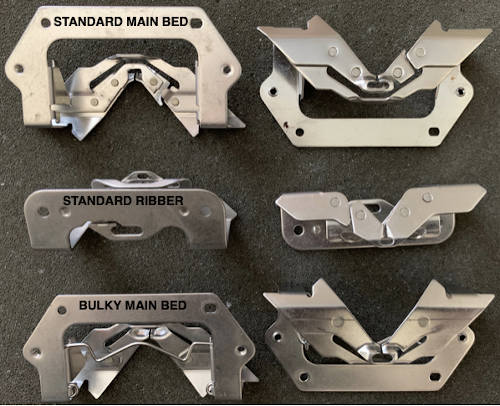 The central hole holds the main yarn and the crescent-shaped hole behind it holds the second yarn. As the carriage moves across the row, the yarn in the crescent-shaped hole trails behind the other yarn and is always the second yarn picked up by the needles, showing on the purl side of your knit.
The central hole holds the main yarn and the crescent-shaped hole behind it holds the second yarn. As the carriage moves across the row, the yarn in the crescent-shaped hole trails behind the other yarn and is always the second yarn picked up by the needles, showing on the purl side of your knit.
Be aware if considering purchasing one that other parts appear on eBay and other sale sites under this name, but are not the specific accessory. The following illustrations and directions are from Brother pubs easily found for free download.
For use on the main bed, images from the KnitKing 893 manual: 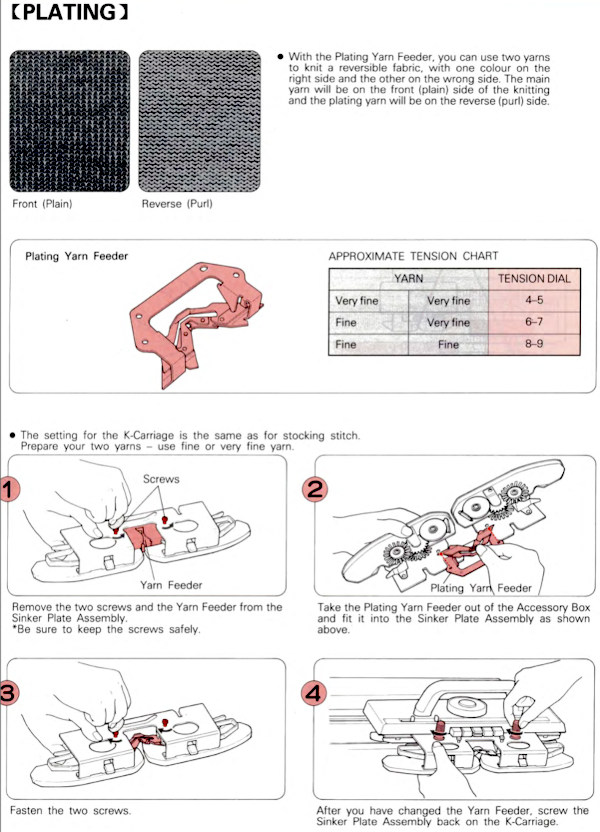

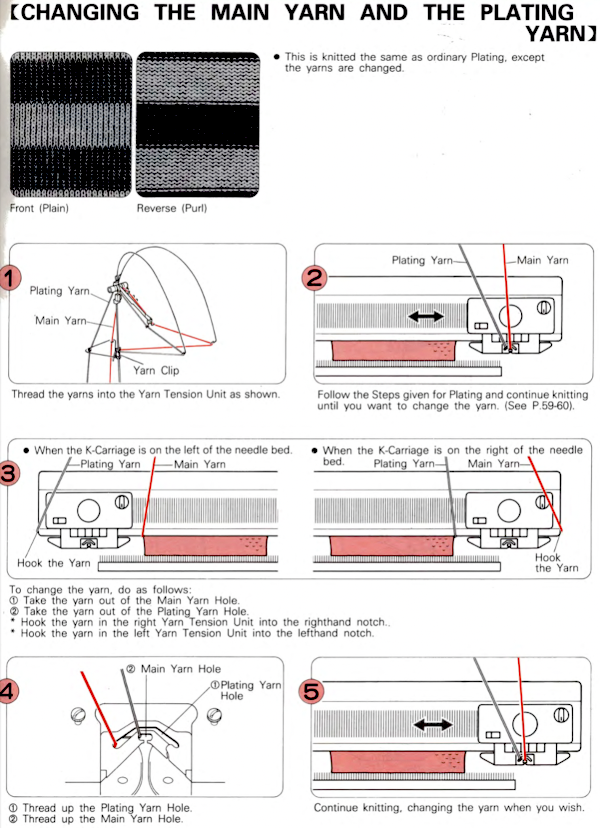
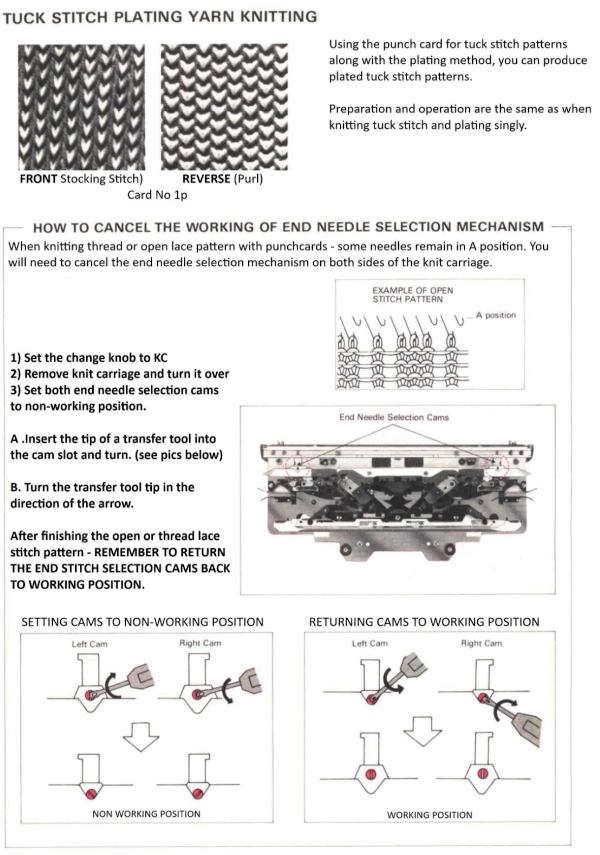 If your sinker plate has rubber wheels, check them and move them to the proper position if needed.
If your sinker plate has rubber wheels, check them and move them to the proper position if needed. 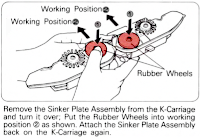 Canceling end needle selection applies in any situation and is used in tuck or slip stitch settings if there are needles out of work on the main bed for any reason to maintain proper patterning in needles in work. Electronic knitters have the KCII option in the change knob.
Canceling end needle selection applies in any situation and is used in tuck or slip stitch settings if there are needles out of work on the main bed for any reason to maintain proper patterning in needles in work. Electronic knitters have the KCII option in the change knob.
For use on the ribber:
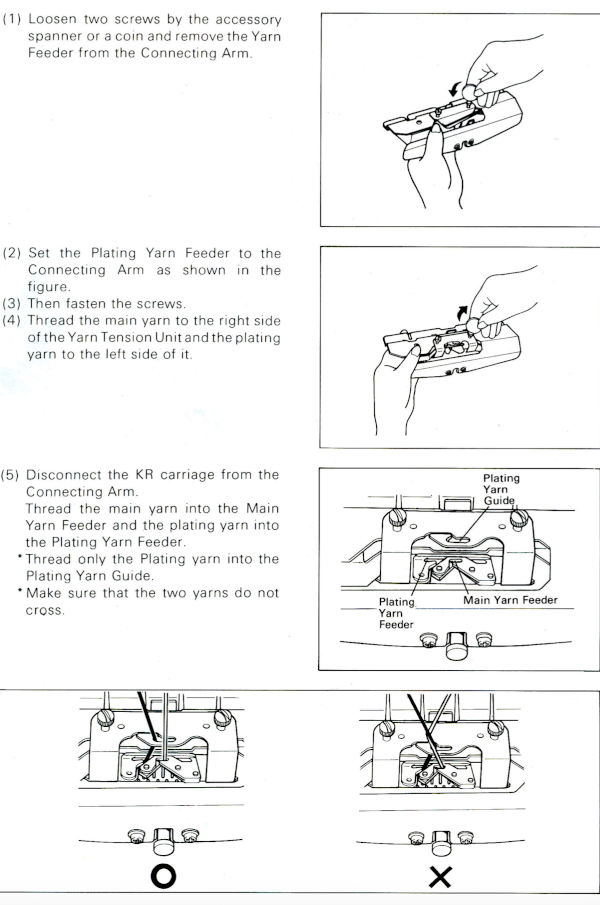
 More random, ancient swatches: stocking stitch using equal-weight yarns in a single bed tuck stitch
More random, ancient swatches: stocking stitch using equal-weight yarns in a single bed tuck stitch
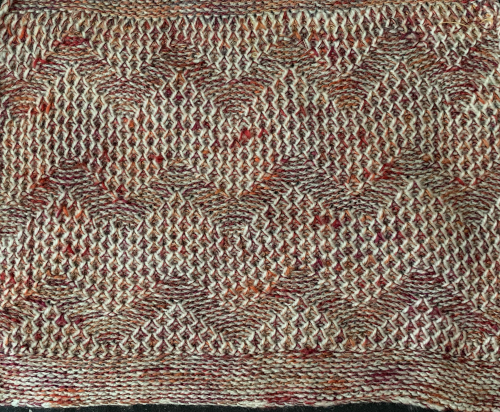
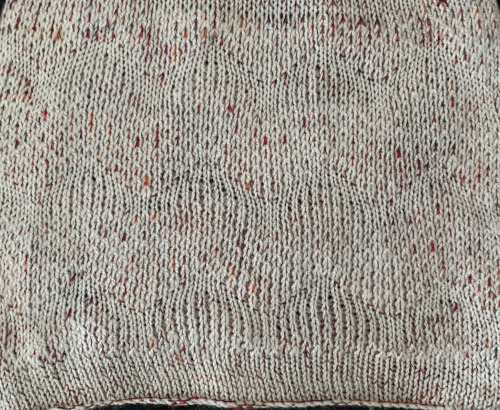 double bed every needle rib tuck stitch using the same pattern repeat
double bed every needle rib tuck stitch using the same pattern repeat 
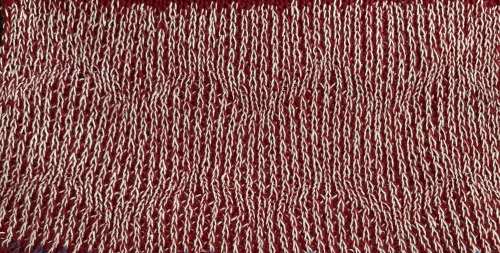 a racked sample
a racked sample 
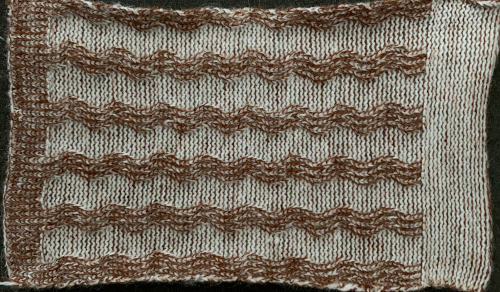 Shadow lace
Shadow lace 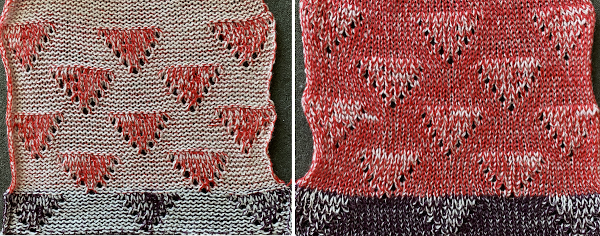 Pleated pattern
Pleated pattern 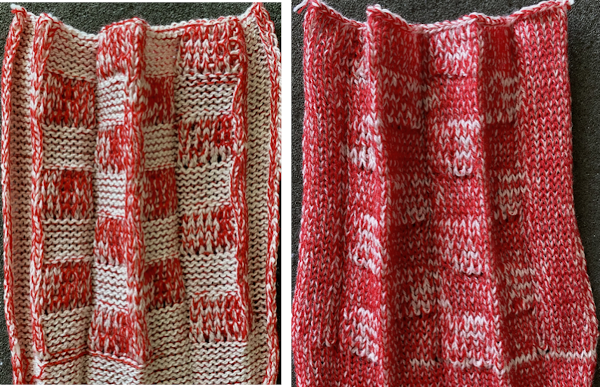 When working on large pieces, the yarn in the front feeder may slip out.
When working on large pieces, the yarn in the front feeder may slip out.
This is one option to prevent that when the ribber is in use 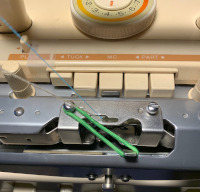 At one point, I produced several circular sweaters using equal-weight yarns to obtain the reversible 2-color look. I had more than one feeder, so I used a dab of glue in the slit below the yellow arrow
At one point, I produced several circular sweaters using equal-weight yarns to obtain the reversible 2-color look. I had more than one feeder, so I used a dab of glue in the slit below the yellow arrow 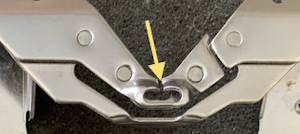 The drawback to doing that is that the yarn cannot then be easily slid in and out of its position but rather has to be dropped through the remaining hole using a double eye needle.
The drawback to doing that is that the yarn cannot then be easily slid in and out of its position but rather has to be dropped through the remaining hole using a double eye needle.
These illustrations are from a Brother manual for the 860 punchcard machine, an idea for working intarsia. I have not tested the method myself, am sharing it as a possibility for working the fabric without an accessory carriage 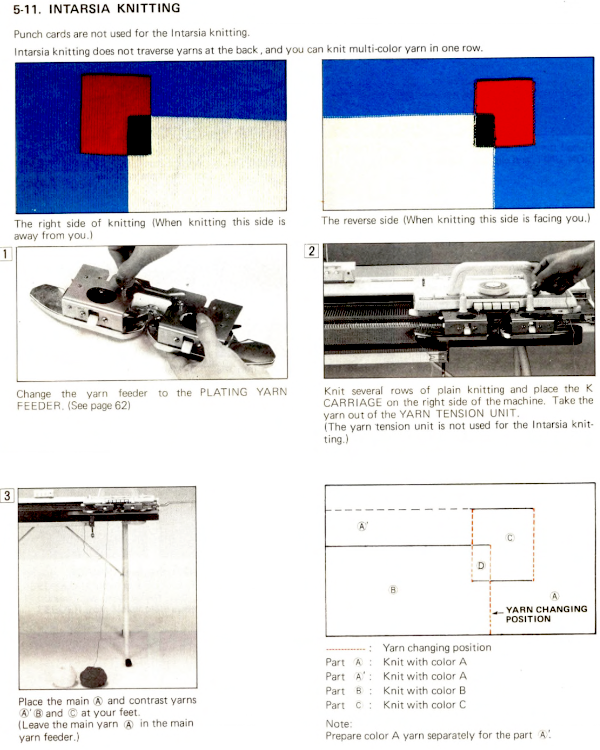

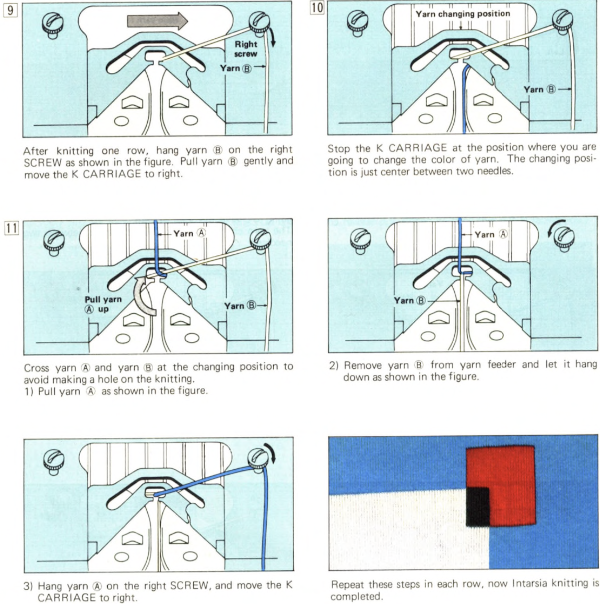 An experimental double bed fabric using the plaiting feeder and thread lace setting double bed 2015/12/05/thread-lace-and-punchcard-knit-carriage-use-on-brother-910_2/
An experimental double bed fabric using the plaiting feeder and thread lace setting double bed 2015/12/05/thread-lace-and-punchcard-knit-carriage-use-on-brother-910_2/